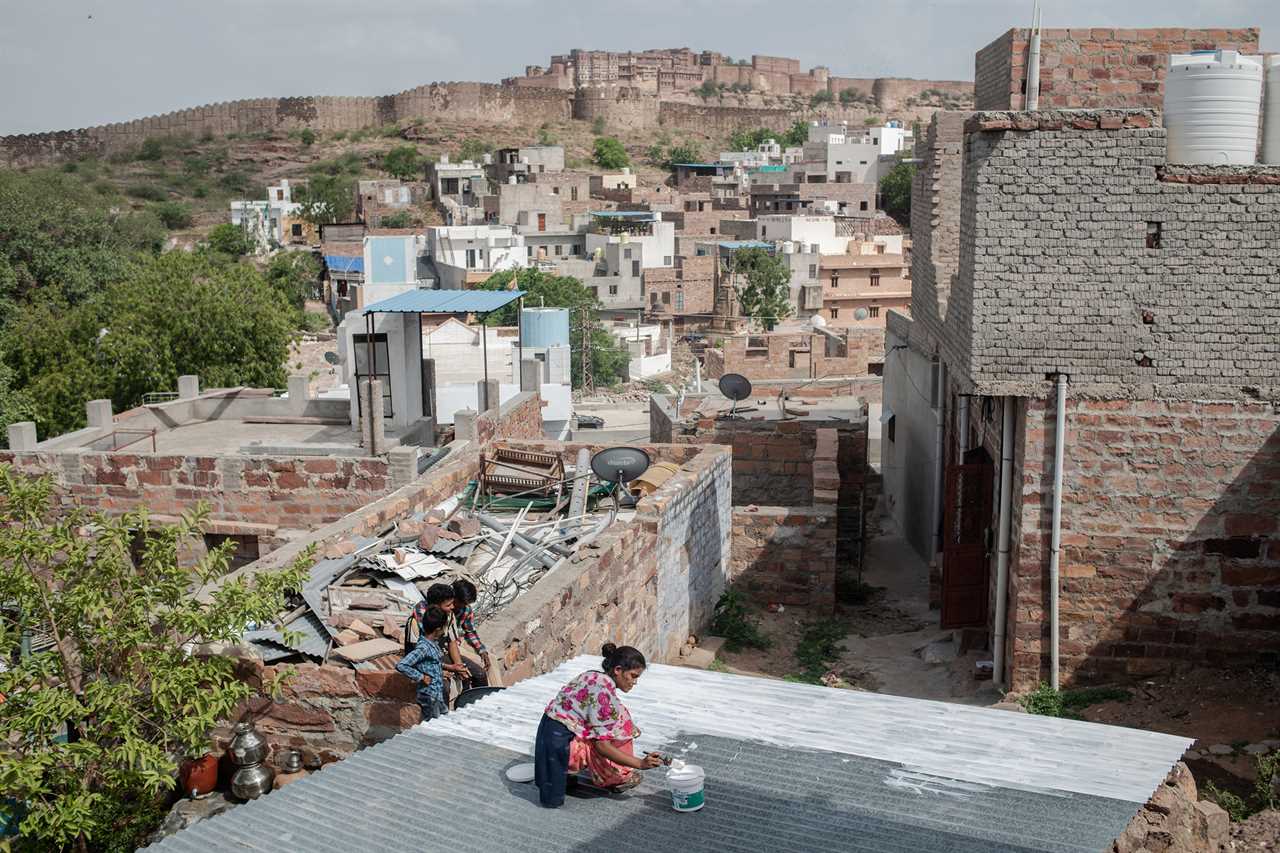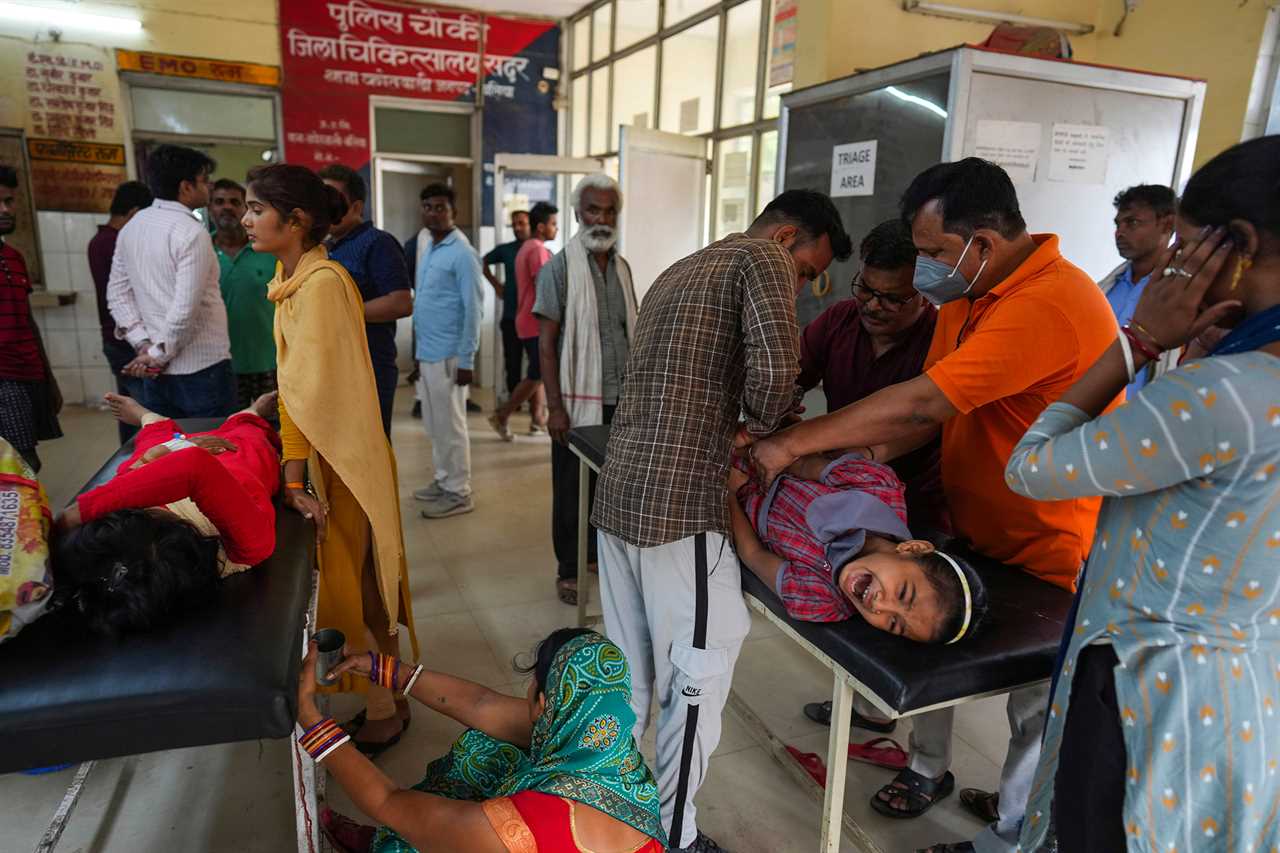---------------------------------------
Bhanu ben Jadav has been earning her daily wage for the past 18 years by threading beads into intricate necklaces in her slum settlement of Vasant Nagar in the western Indian city of Ahmedabad. She earns around 2,500 rupees, or $30 a month, to feed her family, but the work requires patience, concentration, and cool weather—which has, of late, become near-impossible with the mercury reaching 46°C (114.8°F) this week. In recent days, at least 96 people have died from the sweltering heat in two of India’s most populous states.
“I get headaches, nausea, and vomiting, and my capacity to work shrinks,” 44-year-old Jadav tells TIME over the phone. “I lose so much in this extreme heat.”
[time-brightcove not-tgx=”true”]
Women like Jadav make up 65% of the world’s home-based workforce, which consists of informal workers who produce goods or services in or near their homes for local, domestic, or global markets. There are some 42 million workers like this in India alone. Now they are bearing the brunt of deadly heat waves across South Asia, which experts say could halt or even reverse India’s progress in reducing poverty, food and income security, and gender equality.
More from TIME
[video id=vB3Q8mTY autostart="viewable"]
Read More: Western Architecture is Making India’s Heat Waves Worse
Last year, India’s meteorological department stated that the country experienced the hottest March since 1901, when it first began recording temperatures. A recent study by Cambridge University estimates that since April 2022, 90% of the country has been at increased risk from hunger, loss of income, or premature death during the record-breaking heat waves, which are becoming more common due to climate change.
Although April, May, and June are generally India’s hottest months, extreme heat has been arriving early in recent years. In March, over 60% of India recorded above-normal maximum temperatures.
As the frequency and intensity of heat waves increase, so does their impact. “Long-term projections indicate that Indian heat waves could cross the survivability limit for a healthy human resting in the shade by 2050,” the Cambridge study said.

Rebecca Conway—Getty ImagesResident Nandini Chohan, 16, paints the roof of the home she shares with her family with reflective paint following an assessment by the Mahila Housing Trust in Chandpole on June 14 in Jodhpur, India. The Mahila Housing Trust trains women to work in their communities to assess and implement measures to mitigate the impact and effects of climate change and rising temperatures, including how to keep their homes cool.
Jadav is usually on her feet from 6 a.m. When she isn’t sitting in the communal courtyard outside her home making necklaces, she says she travels from home-to-home as a volunteer for the Mahila Housing Trust, a local nonprofit that aims to improve women’s living and working conditions. But she says that task is made more difficult by heat exhaustion and nausea—just some of the symptoms caused by heat waves.
No group is more impacted than women. A report by HomeNet South Asia, a regional network of home-based workers, found that 43% of women surveyed had reported a loss in income and an increase in caregiving as a result of extreme heat. Another 2014 study concluded that more women died during a heat wave in Ahmedabad in 2010 when temperatures reached 47.8°C (118°F) and heat-related hospital admissions of newborns increased by 43%.
Read More: What Extreme Heat Does to the Human Body
Ronita Bardhan, an associate professor who co-authored the 2023 Cambridge study, says that while people of all genders are equally unable to cope beyond a certain temperature, women are less likely to take protective measures from the heat. “Women will not do any sort of intervention unless the temperature crosses around 32°C [89.6°F] whereas men will start to access any sort of cooling intervention as soon as it crosses around 28 or 29°C [82 or 84°F],” Bardhan says.
During long days spent inside to avoid the heat, many women suffer from dehydration. Lots of research, including the study on Ahmedabad’s 2010 deadly heatwave by the U.S. think tank Rand Corporation, has pointed to the lack of access to toilets, which leads women to drink less water to avoid relieving themselves outdoors.
Despite these factors, Jadav says that most women she knows feel too embarrassed to discuss these issues, leading to a culture of silence. “We call it the norm of a good housewife,” Bardhan says. “This cultural notion doesn’t provide women with the agency to cool themselves down; it dictates they not undertake a lot of interventions when required.”

Rajesh Kumar Singh—APPeople suffering from heat related ailments crowd the district hospital in Ballia, Uttar Pradesh, India, on June 20. A scorching heat wave in two of India’s most populous states has overwhelmed hospitals, filled a morgue to capacity and disrupted power supply, forcing staff to use books to cool patients as officials investigate the climbing death toll.
The most obvious prevention method is investing in electricity and indoor toilets, Bardhan says. But even drinking water can be “life-changing.”
Findings by the U.N.’s Intergovernmental Panel on Climate Change say that the total duration of heat waves has increased by about three days in the last 30 years, and is expected to go up 12 to 18 days more by 2060.
This has pushed the Indian government, including local authorities, to develop better prevention strategies. In 2013, Ahmedabad became the first city to implement a Heat Action Plan (HAP), a guide for emergency responses to heat waves. The city has subsequently reduced the number of heat-related deaths by more than 1,000 each year.
HAP was seen as a pioneering strategy to shield people and adopted by several cities, but challenges persist. When India’s Centre for Policy Research analyzed 37 HAPs in nine cities and 13 districts across 18 states, it found that most plans weren’t built for the local context, oversimplified hazards, and poorly identified and targeted vulnerable groups. In many cases, the plans were underfunded and insufficiently transparent. On a national level, the India Cooling Action Plan, which outlines cooling measures to deal with rising heat over the next two decades, has also suffered from a lack of funding.
Workers like Jadav have turned to more informal mechanisms. She painted her roof with solar-reflective white paint, which research says is one of the quickest and easiest methods of passive cooling. (In Ahmedabad, more than 7,000 roofs belonging to low-income people have been painted.)
More recently, “parametric insurance” has emerged as a new solution to help protect women’s incomes and health. Under this initiative, workers can receive payouts on days of extreme heat, so that they don’t have to work under dangerous conditions.
In Ahmedabad, several local collectives like the Self Employed Women’s Association and Jadav’s Mahila Housing Trust, are trialing “parametric insurance.” The Mahila Housing Trust partnered with London-based Global Parametrics to design an initiative where different heat levels result in different payments. It is expected to be rolled out in three different cities by next year, says Wendy Smith, impact and ESG manager at Global Parametrics.
Jadav recently attended an information session about the program. Although she’s nervous about paying for insurance she isn’t sure will reap dividends, she says she has no other way to protect her income—or her safety.
“I need to work so my family can eat, but some days it’s just too hot,” she says. “I can’t afford an air conditioner, but if I can pay for this insurance and get something in return, it’s worth trying.”
-----------------------------------------
By: Astha Rajvanshi
Title: Why Women Are Especially Vulnerable During India’s Deadly Heat Waves
Sourced From: time.com/6289448/india-extreme-heat-women/
Published Date: Fri, 23 Jun 2023 10:00:33 +0000
Read More
Did you miss our previous article...
https://prohealthsciences.com/general-health-and-wellness/should-athletes-go-keto
 General Health and WellnessFitness and ExerciseSupplements and VitaminsPandemic NewsVideosPrivacy PolicyTerms And Conditions
General Health and WellnessFitness and ExerciseSupplements and VitaminsPandemic NewsVideosPrivacy PolicyTerms And Conditions
